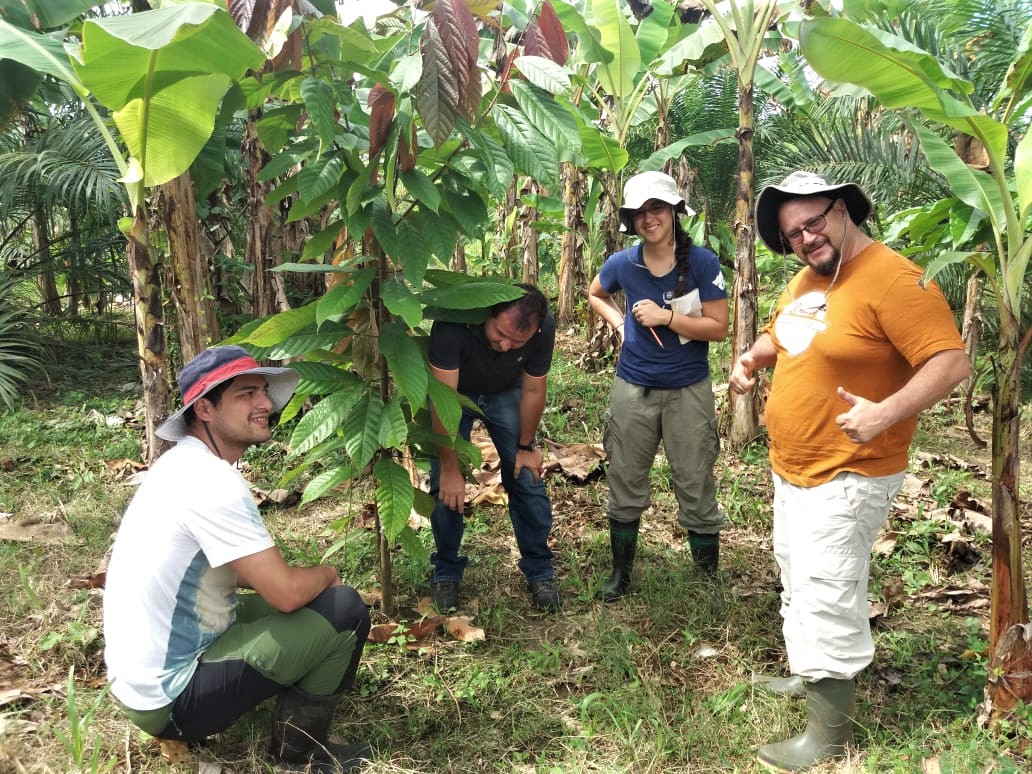Experimental African Palm Laboratory (LAPA) enters a new phase
After three years of planting, grafting, maintaining (and revamping following the impact of extreme weather) LAPA’s experimental plantations, we are now actively moving into a new two-pronged phase: i) collecting critical information about the performance of the enriched plantations, compared to the traditional monoculture plantations, and ii) open it as a platform for research and education on the part of interested partners.
A central objective of LAPA is to examine oil palm productivity in diversified plantations, compared to traditional monocultures, and to place such productivity in the context of the additional benefits of diversified plantations.
It is well known that oil palm requires plenty of sunlight to maximize production. Therefore, there is no appetite to mix it with other crops. This however, runs the risks typical of monocultures, such as the emergence of devastating pests and diseases—in addition to biodiversity impoverishment. LAPA’s innovation consists of increasing the plantation biodiversity without interfering with light availability, via planting of crops underneath the palm canopy, including, in sequence, bananas and cacao—both crops locally appreciated and of economic value. Thus, we expect to assess the net benefits of oil, banana and cacao production (and improved food security), compared to only oil production.
Beyond possible differences in economic return, we are examining biodiversity and ecosystem services differences. This work is conducted by the INOGO/LAPA team, as well as other participants (thus simultaneously addressing our second objective in this phase). For example, Samantha Faul, a Stanford undergraduate (Dirzo Lab), is conducting her thesis on dung beetle abundance and diversity across the experimental plots. Dung beetles are crucial “ecosystem engineers” for the decomposition of organic matter and its recycling in the food chain. Samantha has completed the survey and identification of all captured species and she is currently working on data analysis. In addition, she is conducting a spatial analysis of forest coverage in the areas surrounding the experimental plots that compose LAPA. Lucia Mack, a Costa Rican forestry student from the Instituto Tecnologico, will be conducting her undergraduate thesis on soil characterization and temporal dynamics in the LAPA plots, starting in 2019, with INOGO support.
Working with colleague Dr. Gabriel Gutierrez from UNAM (former Dirzo lab), the monitoring of abundance and diversity of small mammals in our plantations is being examined. This sub-project is critical as we wish to document if the recognized risk (and local farmers’ concern) of rodent-human contact differs between enriched plantations and monocultures. So far, 225 rodents have been captured, tagged and released. By collecting blood and ectoparasite loads (mostly fleas) from all captured rodents, we will examine their potential role in zoonotic diseases in oil palm plantations in the region. Interestingly, these initial surveys show that the abundance of rodents increases in monoculture plantations, compared to the diversified plantations. The potential significance of this rodent increase will be examined (funding permitting) via the molecular identification (DNA sequencing) of the diseases borne by the rodents.
LAPA is also concerned with outreach. Thus (in addition to employing local families in the maintenance of the experiment), informational signage has been installed at three of the experimental sites (Photos below). Such posters aim to inform local people and any visitors about LAPA’s work while also serving as an INOGO’s node for educational purposes for children from local schools.
Alice, Enrique, and their daughter Glenda next to the LAPA informational signage on their farm in Rancho Quemado.

Researchers Ricardo Salazar and Carlos Robles, with student Lucia Mack (Instituto Tecnologico de CR) on one of the LAPA parcels. LAPA team member Diego shows them grafted cacao.
In sum, this new phase of LAPA is off to a great start and we are all excited about its trajectory and future contributions to the understanding of the significance of oil palm innovative management and its contributions to human wellbeing in the region and beyond.